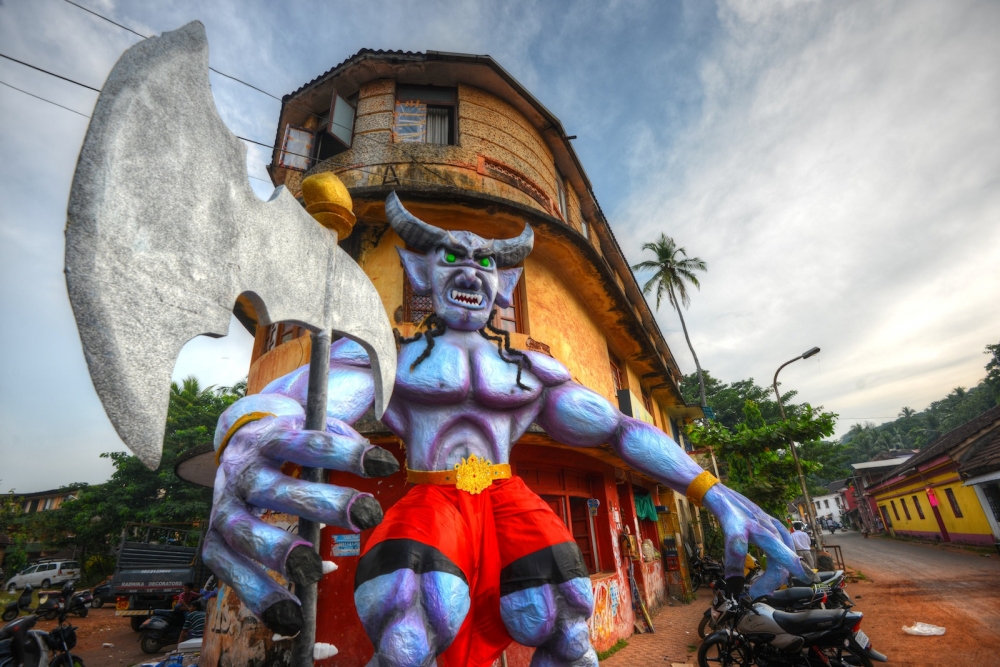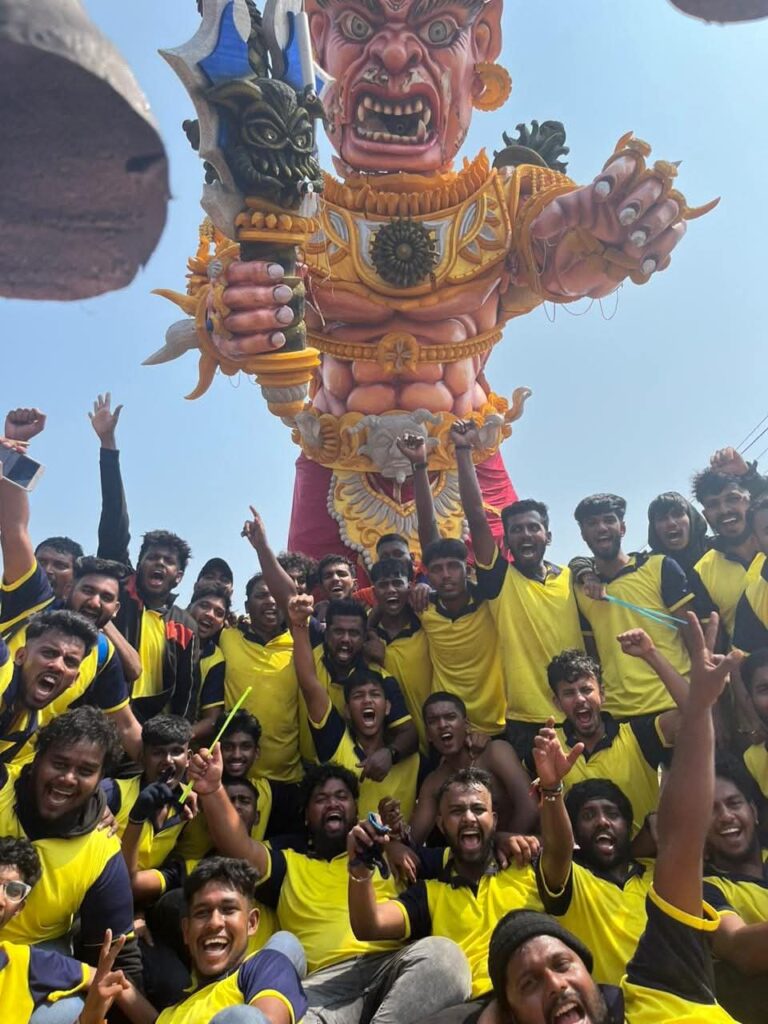
In Goa, the night before Diwali carries a special significance as it commemorates the defeat of the demon king Narkasur by Lord Krishna. According to Hindu mythology, Narkasur’s tyranny spread fear across heaven and earth until Krishna, with the help of his consort Satyabhama, ended his reign of terror. This victory of light over darkness and good over evil forms the essence of Narkasur Chaturdashi, a festival that Goans celebrate with fire, music, and creativity.
The Making of the Narkasur Effigy
Weeks before Diwali, Goan villages and towns come alive with excitement as groups of youngsters begin constructing towering effigies of Narkasur. These figures, often made from bamboo, hay, paper, and cloth, can reach over 20 feet in height. Painted in bright colors with fierce eyes, horns, and wide grins, each effigy becomes a work of art reflecting both imagination and skill. The process isn’t just about craftsmanship, it’s a bonding experience where communities come together to build something symbolic and powerful.
The Fiery Night of Celebration
As dusk falls on the eve of Diwali, the streets of Goa transform into a carnival of energy. Processions featuring drums, music, and laughter parade through neighborhoods as people gather to witness the grand spectacle. When the effigy is finally set ablaze, cheers erupt and the night sky glows with flames, symbolizing the destruction of evil and negativity. For Goans, this act of burning Narkasur represents not only a mythological triumph but also personal renewal, as families light diyas and welcome the festival of lights with open hearts.
Competitions and Community Spirit
Over the years, the Narkasur tradition has evolved into a friendly competition among villages and youth groups. Cities like Calangute, Margao, Panaji, Vasco da Gama, and Mapusa host organized contests where participants showcase their creativity through intricate designs and innovative storytelling. Prizes are awarded for categories like the most artistic effigy, best message, and eco-friendly design. The excitement builds up through the night, blending traditional devotion with modern-day enthusiasm and local pride.
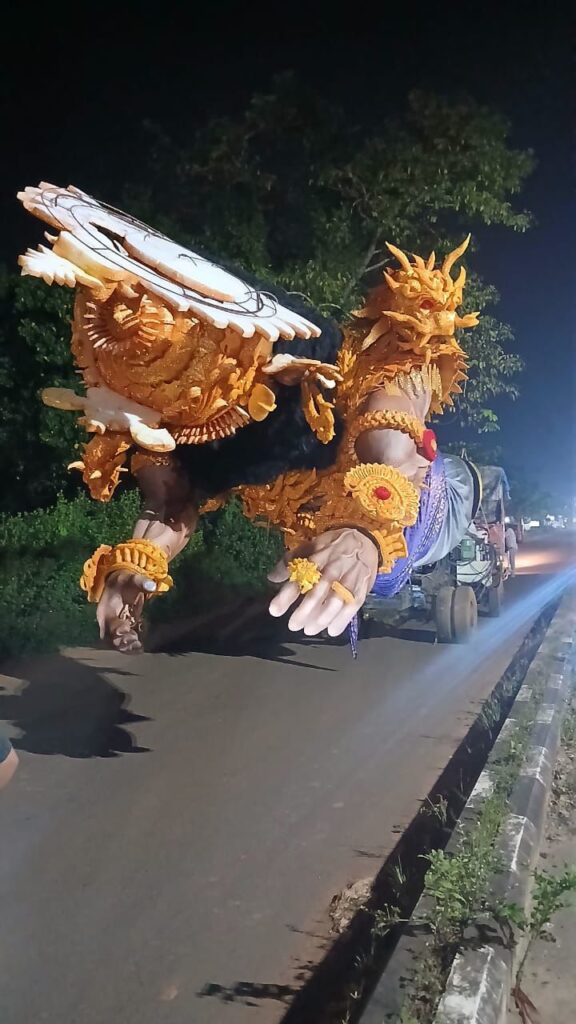
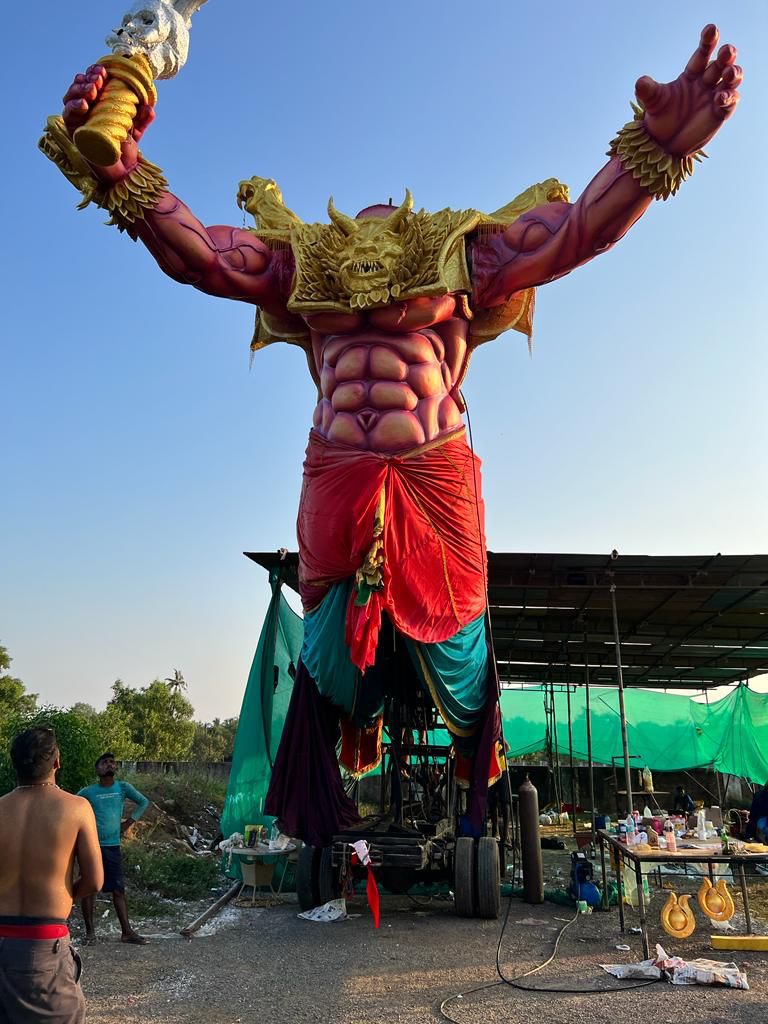
The Move Toward Eco-Friendly Celebrations
In recent years, Goans have become more conscious about the environmental impact of the festival. Many communities now use biodegradable materials, avoiding plastic and toxic paints in favor of paper, clay, and natural dyes. This shift not only reduces pollution but also adds authenticity to the celebration. Preserving its essence while aligning with sustainable values. The younger generation, in particular, has embraced this change, proving that tradition and responsibility can coexist beautifully.
The Cultural Essence of Narkasur
Beyond the visual spectacle, Narkasur in Goa is about togetherness and storytelling. Elders share mythological tales with children, families exchange sweets, and the collective spirit of joy fills every street. The festival reflects Goans’ deep connection to their roots, their love for creativity, faith, and festivity. It’s an event that unites people across religions and generations, embodying the true spirit of Goa: vibrant, inclusive, and full of life.
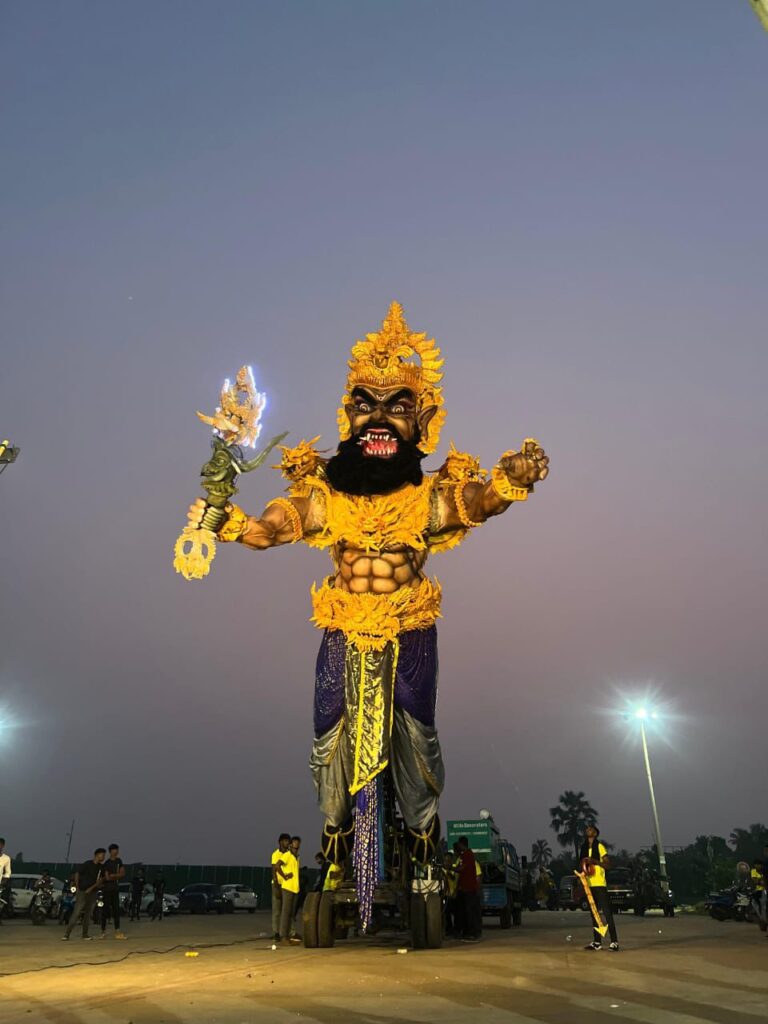
Conclusion
Narkasur in Goa 2025 promises to be a dazzling blend of tradition and innovation. In 2025, the Narkasur festival in Goa will be celebrated on October 19th. Marking the eve of Diwali with vibrant processions, fiery effigies, and the triumph of good over evil. As flames rise into the night sky and music echoes through the lanes, the message remains timeless. That light will always conquer darkness. Whether you’re a local or a visitor, witnessing this fiery celebration offers a glimpse into Goa’s heart, where art, faith, and festivity merge in perfect harmony.

